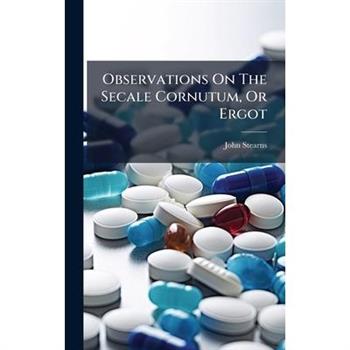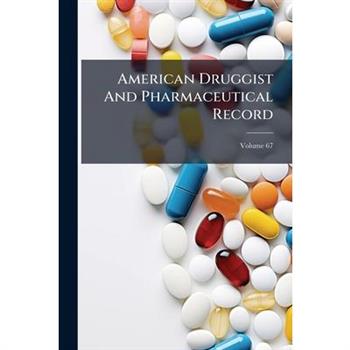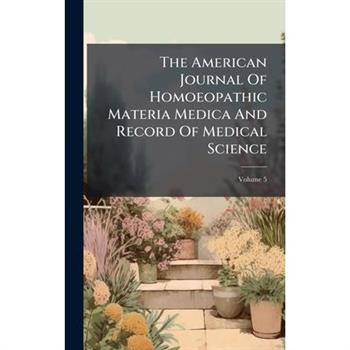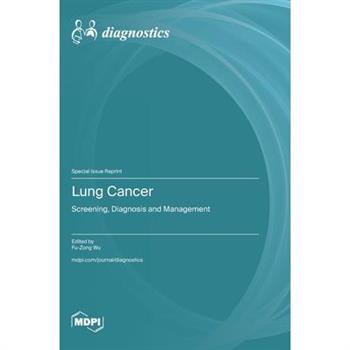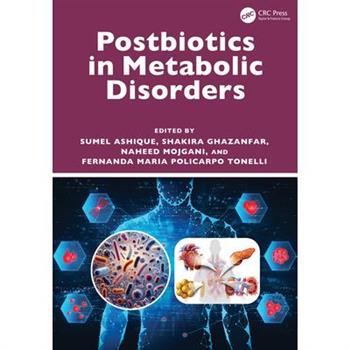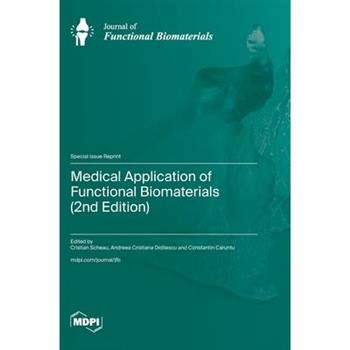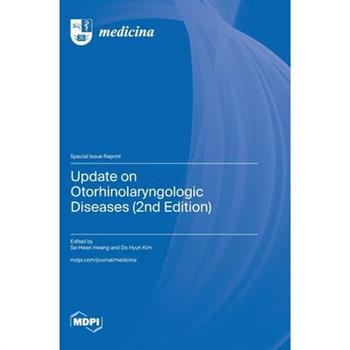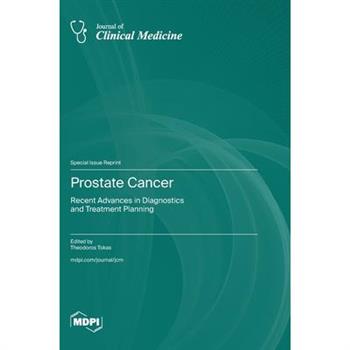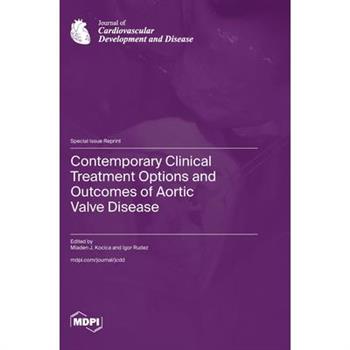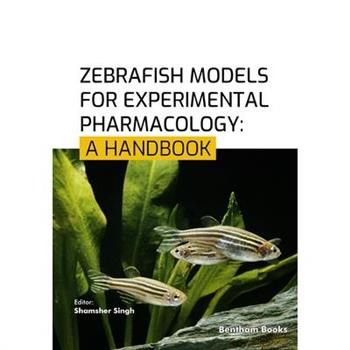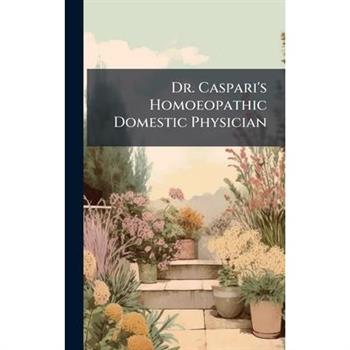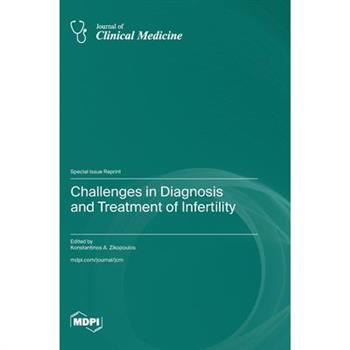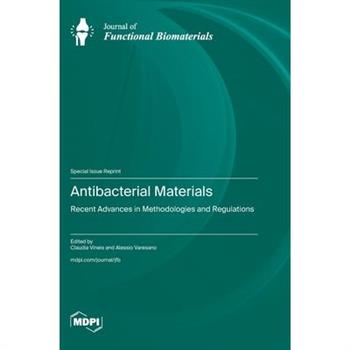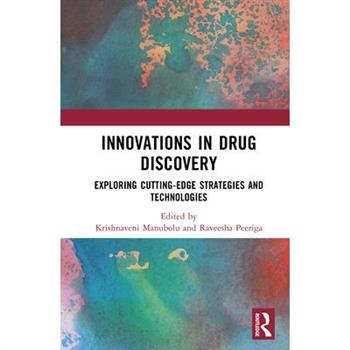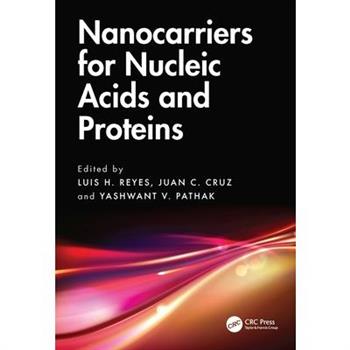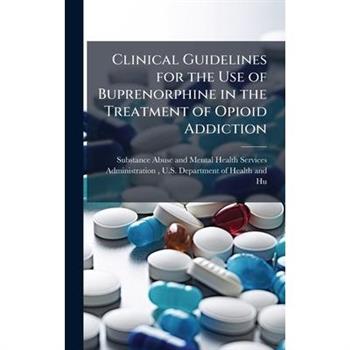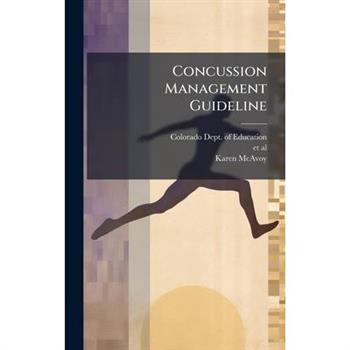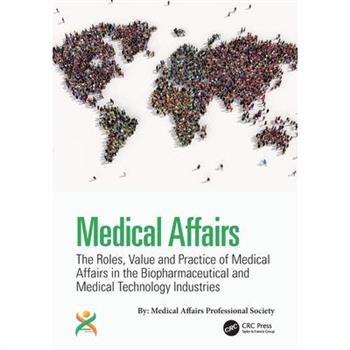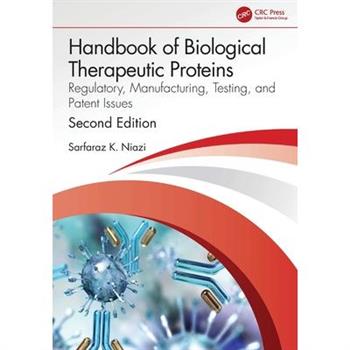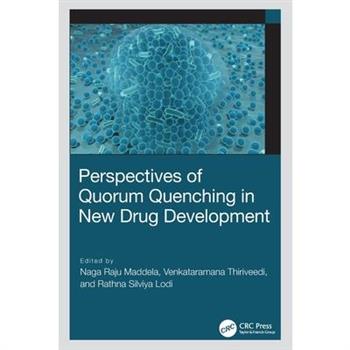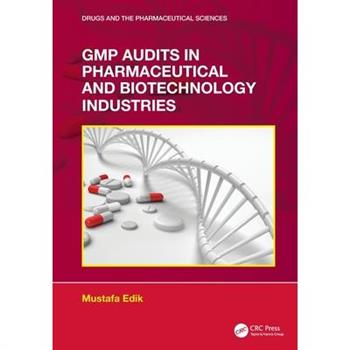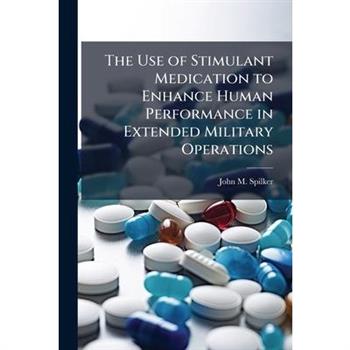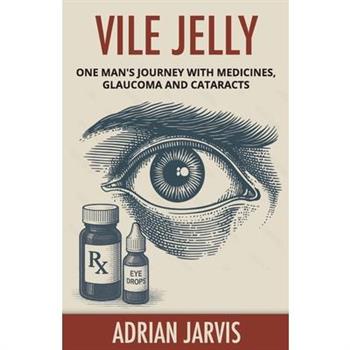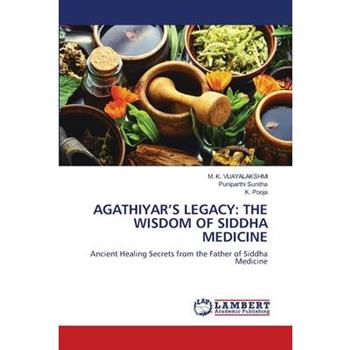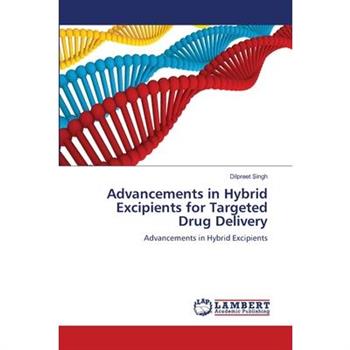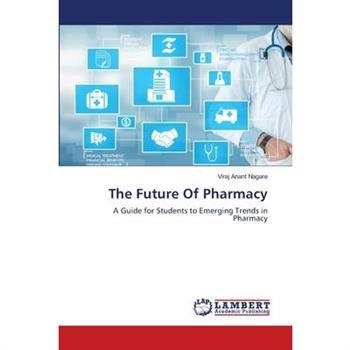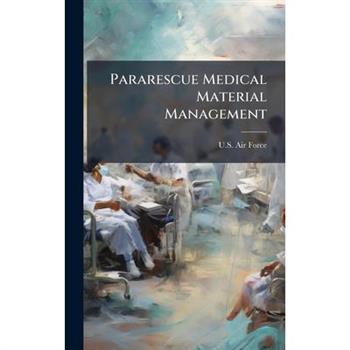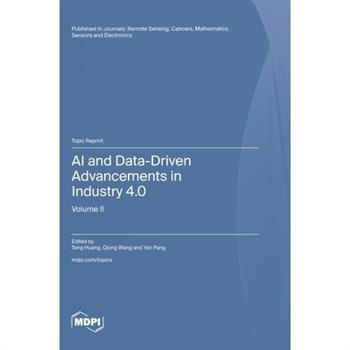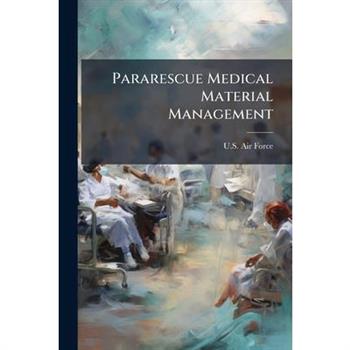Observations On The Secale Cornutum, Or Ergot
"Observations On The Secale Cornutum, Or Ergot, With Directions For Its Use In Parturition" by John Stearns presents an early exploration of the medicinal properties of ergot, specifically its application in childbirth. This historical text offers insights into the practices and understanding of pharmacology and obstetrics during the time it was written. Stearns's observations provide a valuable glimpse into the early uses of ergot, a substance that has since become an important compound in modern medicine. This work serves as a crucial document for those interested in the history of medicine and the evolution of pharmacological treatments.This work has been selected by scholars as being culturally important, and is part of the knowledge base of civilization as we know it. This work was reproduced from the original artifact, and remains as true to the original work as possible. Therefore, you will see the original copyright references, library stamps (as most of these works have been housed in our most important libraries around the world), and other notations in the work.This work is in the public domain in the United States of America, and possibly other nations. Within the United States, you may freely copy and distribute this work, as no entity (individual or corporate) has a copyright on the body of the work.As a reproduction of a historical artifact, this work may contain missing or blurred pages, poor pictures, errant marks, etc. Scholars believe, and we concur, that this work is important enough to be preserved, reproduced, and made generally available to the public. We appreciate your support of the preservation process, and thank you for being an important part of keeping this knowledge alive and relevant.
American Druggist And Pharmaceutical Record
Explore the historical landscape of American pharmacology and the pharmaceutical industry with the "American Druggist And Pharmaceutical Record, Volume 67." This meticulously preserved volume offers a unique glimpse into the practices, challenges, and innovations shaping the field at the turn of the century. Readers will discover a wealth of information on drug formulations, industry news, and the evolving role of pharmacists in American society. The journal provides insights into the scientific advancements and business strategies defining the era, making it an invaluable resource for historians, researchers, and anyone interested in the evolution of modern medicine. This volume captures a pivotal moment in the development of pharmaceutical practices, preserving a vital record of a rapidly changing industry. A must-have for collections focused on the history of science, medicine, and American business.This work has been selected by scholars as being culturally important, and is part of the knowledge base of civilization as we know it. This work was reproduced from the original artifact, and remains as true to the original work as possible. Therefore, you will see the original copyright references, library stamps (as most of these works have been housed in our most important libraries around the world), and other notations in the work.This work is in the public domain in the United States of America, and possibly other nations. Within the United States, you may freely copy and distribute this work, as no entity (individual or corporate) has a copyright on the body of the work.As a reproduction of a historical artifact, this work may contain missing or blurred pages, poor pictures, errant marks, etc. Scholars believe, and we concur, that this work is important enough to be preserved, reproduced, and made generally available to the public. We appreciate your support of the preservation process, and thank you for being an important part of keeping this knowledge alive and relevant.
The American Journal Of Homoeopathic Materia Medica And Record Of Medical Science
Delve into the historical landscape of alternative medicine with "The American Journal Of Homoeopathic Materia Medica And Record Of Medical Science, Volume 5." This compilation offers a detailed look at homoeopathic practices and medical science during a pivotal era. It provides insights into the remedies, methodologies, and scientific discussions prevalent in 19th-century homoeopathy. Explore a wealth of information on materia medica, offering valuable perspectives for historians, medical professionals, and anyone interested in the evolution of medical treatments. This volume stands as a testament to the enduring quest for healing and the diverse approaches that have shaped medical science.This work has been selected by scholars as being culturally important, and is part of the knowledge base of civilization as we know it. This work was reproduced from the original artifact, and remains as true to the original work as possible. Therefore, you will see the original copyright references, library stamps (as most of these works have been housed in our most important libraries around the world), and other notations in the work.This work is in the public domain in the United States of America, and possibly other nations. Within the United States, you may freely copy and distribute this work, as no entity (individual or corporate) has a copyright on the body of the work.As a reproduction of a historical artifact, this work may contain missing or blurred pages, poor pictures, errant marks, etc. Scholars believe, and we concur, that this work is important enough to be preserved, reproduced, and made generally available to the public. We appreciate your support of the preservation process, and thank you for being an important part of keeping this knowledge alive and relevant.
Very Generous Things, Plants-We Don't Deserve Them, Really
A collection of the spoken words and written communications of internationally renowned herbalist and educator Christopher Hedley.
Lung Cancer
Lung cancer remains a major global health challenge, representing the leading cause of cancer-related mortality worldwide. Despite significant progress in treatment, the prognosis for many patients remains poor due to the high proportion of cases diagnosed at an advanced stage. The articles in this issue span a range of disciplines, highlighting recent advances in low-dose computed tomography (LDCT) screening, radiomics, artificial intelligence-assisted diagnostics, and biomarker-guided tools, along with evolving therapies such as immunotherapy and targeted treatments. Special attention is given to risk-based, population-tailored screening strategies, with a particular focus on non-smokers and underserved high-risk groups. As a diagnostic specialist based in Kaohsiung, Taiwan, I have interpreted over 10,000 LDCT scans and have seen firsthand the vital role of early detection in improving patient outcomes. These experiences reinforce the value of integrating clinical expertise with technological innovation in real-world practice. This Special Issue reflects the collaborative efforts of clinicians, researchers, and public health experts who are dedicated to reducing the global burden of lung cancer. I would like to express my gratitude to the contributing authors and to the editorial and peer-review teams for their commitment to scientific rigor. It is my hope that the insights shared here will inform clinical practice, guide policy, and inspire future research toward better care for patients at risk of lung cancer.
Postbiotics in Metabolic Disorders
This book discusses the role of postbiotics in human health. The initial chapter highlights the potential of postbiotics beyond traditional prebiotics and probiotics. Subsequent chapters present the beneficial effects on various health conditions, including cardiovascular disorders, cancer, diabetes, gestational diabetes, obesity, and mitochondrial disorders.The book covers the role of postbiotics in immune system modulation and inflammation-mediated metabolic disorders. It also explores the interaction of postbiotics with gut microbiota, detailing molecular mechanisms and signaling pathways. In addition, it offers current and future perspectives on postbiotics in human health, addressing their role in managing insulin resistance, glucose metabolism, metabolic endotoxemia, and inflammation in type 2 diabetes. The text provides an in-depth analysis of the impact of postbiotics on non-alcoholic fatty liver disease (NAFLD), lipid profiles, and hypertension. In addition, the chapters: 1) Explore the promising concept of postbiotics and their potential beyond prebiotics and probiotics.2) Examine the beneficial effects of postbiotics on cardiovascular health, cancer, diabetes, and other conditions.3) Discuss the role of postbiotics in immune system modulation and inflammation-mediated metabolic disorders.4) Cover the interaction of postbiotics with gut microbiota, highlighting molecular mechanisms and signaling pathways.5) Analyze the current and future perspectives on postbiotics, including their impact on various metabolic disorders.This book is a useful resource for researchers and students of pharmacology and biotechnology.
Medical Application of Functional Biomaterials (2nd Edition)
This reprint presents a curated selection of recent scientific contributions exploring the medical applications of functional biomaterials. As research in this interdisciplinary field progresses, the focus continues to shift toward enhancing the safety, performance, and biological compatibility of advanced materials used in medical devices. The articles featured here reflect a wide range of innovations-from strategies to evaluate immune responses to the development of biocompatible materials for implants. Particular attention is given to topics such as dental biomaterials, biomedical nanoparticles, and the use of naturally derived substances in therapeutic applications. Collectively, these studies highlight the ongoing efforts to bridge the gap between material science and clinical practice, offering new insights into the complex interactions between engineered materials and biological systems. This compilation is valuable for researchers, engineers, and clinicians interested in the current landscape and future perspectives of functional biomaterials in medicine.
Update on Otorhinolaryngologic Diseases (2nd Edition)
As a result of the global burden imposed by COVID-19, the significance of respiratory disease management has received increasing recognition, reinforcing the vital role of otolaryngology in public health. Simultaneously, the convergence of advanced diagnostic techniques and innovative research tools has led to continuous developments in the understanding and treatment of otolaryngologic disorders. This Special Issue comprises a diverse collection of high-quality contributions, including original research on emerging surgical techniques, optimized surgical strategies, and clinical decision-making, as well as evaluations of treatment outcomes and comprehensive reviews.
Prostate Cancer
Globally, prostate cancer (PCa) is the second most common cancer to affect males. Tumors vary in their level of aggression; non-aggressive tumors can be safely monitored, while tumors with a poor prognosis are only appropriate for palliative care. Modern imaging, biomarkers, nomograms, and accurate stratification-especially for the most clinically diverse subset of intermediate-risk patients-offer a more effective framework for managing these individuals. Because regular transrectal ultrasound is not always accurate, targeted biopsies improve the detection of clinically significant PCa. Magnetic resonance imaging (MRI) is essential for local staging and can help determine when a prostate biopsy is indicated. Modern, less costly ultrasound-based techniques offer high-quality imaging when MRI is not possible. For the staging of aggressive tumors, more accurate staging techniques, such as PSMA PET/CT, have been employed; however, at this time, there is insufficient information to justify further care. Germline testing and genetic counseling can aid in the early detection and treatment of PCa. Urine, serum, and tissue-based biomarkers enhance the detection and facilitate risk classification for patients with PCa. Together, these methods produce risk calculators and nomograms that can be used to predict the risk of cancer, the likelihood of aggressive disease, and the probability of a positive treatment response. This reprint aims to provide new insights into PCa, and the advances in diagnostics and treatment planning.
Timeless Healing for Modern Lives
Timeless Healing for Modern Lives Ayurvedic Wisdom for Modern DiseasesBy Akshay Jain, Holistic Ayurvedic Nutritionist In a world filled with chronic stress, fast food, and rising disease, ancient Ayurveda shines as a guiding light.Timeless Healing for Modern Lives is a powerful blend of clinical insight and Ayurvedic wisdom, offering readers not just treatment-but true transformation.Written by certified Ayurvedic Nutritionist Akshay Jain, this book presents time-tested methods to heal naturally-without side effects. It bridges modern challenges with age-old Ayurvedic practices that nurture Body, Mind, and Spirit.
Contemporary Clinical Treatment Options and Outcomes of Aortic Valve Disease
The aortic valve is strategically positioned within the heart, and the pathologies affecting this valve have emerged as a significant area of interest for cardiologists and surgeons. Aortic valve diseases are a major contributor to mortality rates linked to valvular heart diseases. While its function was historically perceived as entirely passive, recent research has yielded profound insights into the intricate physiology of the aortic root, thereby establishing a new paradigm for understanding, diagnosing, and managing aortic valve diseases. Since the pioneering implantation of the Hufnagel aortic valve prosthesis in the descending thoracic aorta at Georgetown University in 1952, considerable advancements have been achieved in this domain. The progress in scientific research and technological innovation-encompassing genetics, molecular biology, bioengineering, and biotechnology-has revealed new avenues for the diagnosis and treatment of aortic valve diseases. This Reprint aims to address critical and contemporary inquiries relevant to clinical and surgical practices, fostering and generating new insights into the science of aortic valve diseases.
Zebrafish Models for Experimental Pharmacology
Zebrafish Models for Experimental Pharmacology: A Handbook is an essential resource for researchers, pharmacologists, and students exploring the expanding role of Zebrafish in drug discovery and experimental pharmacology. The book presents a clear, practical guide to contemporary experimental designs, ethical considerations, animal care, and laboratory techniques specific to Zebrafish models. Key features Comprehensive coverage of drug administration routes, blood collection, and anesthesia techniques in Zebrafish Detailed methodologies for a wide range of behavioral and pharmacological assays, including the Shoaling Test, Novel Diving Tank Test, T-Maze, Y-Maze, Light-Dark Chamber Test, and more Practical guidance on experimental preparation, solution formulation, and tissue handling for in vitro studies Examples and illustrated explanations to support practical implementation in laboratory settings Designed to bridge the gap between foundational research and translational applications, this handbook is a valuable reference for postgraduate students, research scholars, and professionals working in academic, clinical, and industrial pharmacology settings.
Fenner's Formulary
"Fenner's Formulary" is a comprehensive collection of pharmaceutical formulas and preparations from the late 19th century. Compiled by Byron Fenner, this formulary offers a detailed look into the practices and ingredients used by pharmacists and apothecaries of the time. This historical text provides insight into the composition and application of various medicinal compounds, offering a valuable resource for historians of medicine, pharmaceutical researchers, and anyone interested in the evolution of healthcare practices. It is a fascinating glimpse into the world of traditional medicine and the formulas that shaped it.This work has been selected by scholars as being culturally important, and is part of the knowledge base of civilization as we know it. This work was reproduced from the original artifact, and remains as true to the original work as possible. Therefore, you will see the original copyright references, library stamps (as most of these works have been housed in our most important libraries around the world), and other notations in the work.This work is in the public domain in the United States of America, and possibly other nations. Within the United States, you may freely copy and distribute this work, as no entity (individual or corporate) has a copyright on the body of the work.As a reproduction of a historical artifact, this work may contain missing or blurred pages, poor pictures, errant marks, etc. Scholars believe, and we concur, that this work is important enough to be preserved, reproduced, and made generally available to the public. We appreciate your support of the preservation process, and thank you for being an important part of keeping this knowledge alive and relevant.
Dr. Caspari's Homoeopathic Domestic Physician
"Dr. Caspari's Homoeopathic Domestic Physician" is a comprehensive guide to homeopathic treatments, originally published in 1852. This historical text offers insights into the practice of homeopathy during the 19th century, providing detailed instructions and remedies for a wide range of ailments. Designed as a domestic physician, the book aims to empower individuals to address their health concerns within the comfort of their own homes. It reflects the era's approach to healthcare and alternative medicine. A valuable resource for those interested in the history of medicine, homeopathic practices, and alternative healing methods.This work has been selected by scholars as being culturally important, and is part of the knowledge base of civilization as we know it. This work was reproduced from the original artifact, and remains as true to the original work as possible. Therefore, you will see the original copyright references, library stamps (as most of these works have been housed in our most important libraries around the world), and other notations in the work.This work is in the public domain in the United States of America, and possibly other nations. Within the United States, you may freely copy and distribute this work, as no entity (individual or corporate) has a copyright on the body of the work.As a reproduction of a historical artifact, this work may contain missing or blurred pages, poor pictures, errant marks, etc. Scholars believe, and we concur, that this work is important enough to be preserved, reproduced, and made generally available to the public. We appreciate your support of the preservation process, and thank you for being an important part of keeping this knowledge alive and relevant.
Challenges in Diagnosis and Treatment of Infertility
The diagnosis and treatment of infertility are challenging due to issues related to precision required to address individual medical needs and personalized assisted reproduction applications. Age-related or gamete-depletion-related subfertility raises concerns about best practice modalities to warrant early diagnoses and prompt treatments to avoid further fertility loss or a significant reduction in a patient's chances to conceive. Lately, technical advances in preimplantation diagnostic approaches, especially via the introduction of NGS, have offered novel insights into the genetic makeup of preimplantation embryos and even the clinical exploitation of mosaic embryos. Additionally, the treatment outcomes of cell therapies and growth factors showed significant improvements in the regeneration of ovaries and the uterus following the advent of PRP therapy. In all cases, technological innovations such as minimally invasive or non-invasive preimplantation genetic diagnosis improved the prognosis of ART and the prospects for a wider application. This reprint presents the latest innovations on recent clinical advances in fertility preservation diagnosis and treatment, as well as the improvement of prospects for the conception and reduction in the time to pregnancy.
Antibacterial Materials
In recent years, the emergence of resistant bacteria has stimulated intensive research in developing antibacterial materials in different fields in order to reduce the spread of antibiotic-resistant bacterial strains. Novel antibacterial materials include a large number of compounds such as nanoparticles, polymers, chemicals, proteins, and enzymes. Moreover, the final antibacterial products that embed the antibacterial compound can have many different shapes, such as textiles, plastics, cosmetics, ceramics, metals, paper, wood, etc. It is difficult to compare the performances of such different materials and applications because cross-method comparisons are currently lacking in the literature. Moreover, the procedures for testing developed in the past are often unsuitable for new antibacterial materials/products, and the scientific soundness of the results can be weak. Quantification (e.g., bacterial reduction) is crucial, and qualitative-only methods can be misleading. The conditions for testing required by current regulations should be critically evaluated to assess the limits of their applications. On the other hand, existing procedures for antibacterial testing of materials are usually quite far from real conditions. Simple and affordable methods have to be developed in order to ensure reproducibility and robustness in conditions close to real world. The aim of this Special Issue is to stimulate contributions to fill these gaps.
Drug Repurposing
This volume is aimed at explaining how drug repurposing works; to what extent the initial hopes have been realised in finding drugs for neurodegenerative diseases, psychiatric disorders, cancer and diseases caused by parasitic worms. Drug repurposing also has had some success in treating bacterial infections. Multi-drug resistance has emerged as a great challenge in the drug development area. Drug repurposing may help there as well; this has been discussed in the context of TB. Like in many other areas, nano-materials have been helpful in formulating drugs for repurposing.The first chapter points out that [a] drug repurposing heralds the demise of the magic bullet concept of drug actions [b] both partners in a drug-target pair are promiscuous and drug repurposing is a subset of polypharmacology.The last chapter talks of vaccine repurposing. Considerable data now exist which makes a compelling case for including this exciting topic.This book is a fair mix of success stories, a reality check on the status of this approach and challenges ahead in this area.
Innovations in Drug Discovery
This fascinating volume delves into the forefront of pharmaceutical research to shed light on the ground-breaking methodologies and technologies driving advancements in drug discovery today.
Nanocarriers for Nucleic Acids and Proteins
At the frontier of modern medicine lies a revolution in drug delivery systems that operates at the scale of billionths of a meter. Nanocarriers for Nucleic Acids and Proteins presents a comprehensive exploration of these groundbreaking technologies that are reshaping therapeutic approaches across medical science.From fundamental concepts to cutting-edge applications, this comprehensive volume brings together world-class researchers to provide an in-depth examination of: Design principles and characteristics of various nanocarrier systems Advanced delivery mechanisms for nucleic acids and proteins Breakthrough applications in gene therapy and cancer immunotherapy Critical aspects of translating laboratory success to clinical implementation Featuring detailed coverage of lipid-based, polymer-based, inorganic, and bio-inspired nanocarriers, this essential resource bridges the gap between theoretical understanding and practical application. Whether you are developing new therapeutic approaches, optimizing delivery systems, or exploring the frontiers of nanomedicine, this comprehensive guide provides the insights and frameworks needed to advance your work.
Direct Aeromedical Evacuation From USCENTCOM to the Continental United States
Landstuhl Regional Medical Center provides outstanding care to patients evacuated from Iraq and Afghanistan. Patients receive further treatment while awaiting evacuation back to the United States. PROBLEM: Landstuhl, as capable as it is, reaches a threshold of effectiveness around a census of 100 medical/surgical patients. New capabilities and processes require development to optimize Landstuhl's effectiveness. METHODS: Statistical analysis showed the effects at Landstuhl of large numbers of casualties experienced downrange. Case studies of emergency direct aeromedical evacuation from the Middle East to the United States showed the feasibility of using this as a method to bypass Landstuhl when reaching the limits of its capabilities. Analysis of current aeromedical policies and procedures help to develop the communications and coordination required it initiate a bypass mission. FINDINGS: The USAF is tactically capable of direct Middle East to the United States aeromedical evacuation. However, its impact on global mobility would require judicious use of the method. CONCLUSIONS: Direct flights from the Middle East to the United States would help alleviate patient census at Landstuhl, given the casualties numbers from past battles in Iraq and Afghanistan. In the case of a concerted enemy effort to inflict harm on US military members in the Middle East, this method alone would not completely alleviate a bottleneck at Landstuhl and further means of increasing capabilities in Europe require more exploration.This work has been selected by scholars as being culturally important, and is part of the knowledge base of civilization as we know it. This work was reproduced from the original artifact, and remains as true to the original work as possible. Therefore, you will see the original copyright references, library stamps (as most of these works have been housed in our most important libraries around the world), and other notations in the work.This work is in the public domain in the United States of America, and possibly other nations. Within the United States, you may freely copy and distribute this work, as no entity (individual or corporate) has a copyright on the body of the work.As a reproduction of a historical artifact, this work may contain missing or blurred pages, poor pictures, errant marks, etc. Scholars believe, and we concur, that this work is important enough to be preserved, reproduced, and made generally available to the public. We appreciate your support of the preservation process, and thank you for being an important part of keeping this knowledge alive and relevant.
Clinical Guidelines for the Use of Buprenorphine in the Treatment of Opioid Addiction
Offers guidelines to physicians using buprenorphine for the medication-assisted treatment of opioid addiction. Explains the pharmacology of buprenorphine, patient assessment, treatment protocols, needs of special populations, and policies and procedures.This work has been selected by scholars as being culturally important, and is part of the knowledge base of civilization as we know it. This work was reproduced from the original artifact, and remains as true to the original work as possible. Therefore, you will see the original copyright references, library stamps (as most of these works have been housed in our most important libraries around the world), and other notations in the work.This work is in the public domain in the United States of America, and possibly other nations. Within the United States, you may freely copy and distribute this work, as no entity (individual or corporate) has a copyright on the body of the work.As a reproduction of a historical artifact, this work may contain missing or blurred pages, poor pictures, errant marks, etc. Scholars believe, and we concur, that this work is important enough to be preserved, reproduced, and made generally available to the public. We appreciate your support of the preservation process, and thank you for being an important part of keeping this knowledge alive and relevant.
Dichloroacetic Acid
The U.S. Environmental Protection Agency (EPA) was introduced on December 2, 1970 by President Richard Nixon. The agency is charged with protecting human health and the environment, by writing and enforcing regulations based on laws passed by Congress. The EPA's struggle to protect health and the environment is seen through each of its official publications. These publications outline new policies, detail problems with enforcing laws, document the need for new legislation, and describe new tactics to use to solve these issues. This collection of publications ranges from historic documents to reports released in the new millennium, and features works like: Bicycle for a Better Environment, Health Effects of Increasing Sulfur Oxides Emissions Draft, and Women and Environmental Health.This work has been selected by scholars as being culturally important, and is part of the knowledge base of civilization as we know it. This work was reproduced from the original artifact, and remains as true to the original work as possible. Therefore, you will see the original copyright references, library stamps (as most of these works have been housed in our most important libraries around the world), and other notations in the work.This work is in the public domain in the United States of America, and possibly other nations. Within the United States, you may freely copy and distribute this work, as no entity (individual or corporate) has a copyright on the body of the work.As a reproduction of a historical artifact, this work may contain missing or blurred pages, poor pictures, errant marks, etc. Scholars believe, and we concur, that this work is important enough to be preserved, reproduced, and made generally available to the public. We appreciate your support of the preservation process, and thank you for being an important part of keeping this knowledge alive and relevant.
Managing the DoD Pharmacy Benefit in the 21st Century
The provision of military medical care across the Department of Defense stands on the cusp of immense change, especially the Pharmacy benefit. Changes in civilian and military policies and procedures, escalation in pharmacy benefit utilization, and increasing medication costs are transforming pharmacy benefit structure and the face of the personnel that provide the pharmacy benefit. Medical breakthroughs are expensive and the DoD, along with the entire US health care system, must astutely manage health care expenditures. This research paper will explore the issues affecting the provision of the DoD pharmacy benefit and attempt to determine the most cost-effective venue for providing this benefit. The primary focus will be the differences between the Military Treatment Facility (MTF) and Tricare Retail Network Pharmacy (TRRx). The Tricare Mail Order Pharmacy (TMOP) is near cost neutral to the MTF, (because the dispensing fee is partially offset by the $3/$9 co-pays) therefore it is excluded from comparisons in this paper. The TMOP's only utility is refilling maintenance medications. It cannot be used to fill acute medication prescriptions like antibiotics. Data from literature sources, the DoD Pharmacoeconomic Center (PEC), and the Pharmacy Data Transaction Service (PDTS) will be used in a retrospective methodology to estimate the most cost-effective venue for providing the DoD pharmacy benefit. This analysis utilizes well-defined, common data points such as medication ingredient costs and number of prescriptions dispensed as well as more nebulous data points like prescription dispensing costs and personnel costs.This work has been selected by scholars as being culturally important, and is part of the knowledge base of civilization as we know it. This work was reproduced from the original artifact, and remains as true to the original work as possible. Therefore, you will see the original copyright references, library stamps (as most of these works have been housed in our most important libraries around the world), and other notations in the work.This work is in the public domain in the United States of America, and possibly other nations. Within the United States, you may freely copy and distribute this work, as no entity (individual or corporate) has a copyright on the body of the work.As a reproduction of a historical artifact, this work may contain missing or blurred pages, poor pictures, errant marks, etc. Scholars believe, and we concur, that this work is important enough to be preserved, reproduced, and made generally available to the public. We appreciate your support of the preservation process, and thank you for being an important part of keeping this knowledge alive and relevant.
Concussion Management Guideline
The Colorado State Publications Library (CoSPL) was established by the General Assembly in 1980 as a part of the Colorado State Library and the Colorado Department of Education. The mission of the library is to provide Colorado residents with permanent public access to information produced by state government. The state publications are valuable sources of information published by Colorado state agencies that include annual reports, budgets, planning reports, consumer information, legislative reports and directories. The publications cover a wide variety of topics including health, business, education, crime, agriculture, mining, employment, taxes, water quality, wildlife and the environment. This publication is one in this collection.This work has been selected by scholars as being culturally important, and is part of the knowledge base of civilization as we know it. This work was reproduced from the original artifact, and remains as true to the original work as possible. Therefore, you will see the original copyright references, library stamps (as most of these works have been housed in our most important libraries around the world), and other notations in the work.This work is in the public domain in the United States of America, and possibly other nations. Within the United States, you may freely copy and distribute this work, as no entity (individual or corporate) has a copyright on the body of the work.As a reproduction of a historical artifact, this work may contain missing or blurred pages, poor pictures, errant marks, etc. Scholars believe, and we concur, that this work is important enough to be preserved, reproduced, and made generally available to the public. We appreciate your support of the preservation process, and thank you for being an important part of keeping this knowledge alive and relevant.
Medical Affairs
Medical Affairs is one of the three strategic pillars of the pharmaceutical and MedTech industries, but while clear career paths exist for Commercial and Research and Development, there is no formal training structure for Medical Affairs professionals. Medical and scientific expertise is a prerequisite for entry into the function, and many people transitioning into Medical Affairs have advanced degrees such as PhD, MD, or PharmD. However, these clinical/scientific experts may not be especially well-versed in aspects of industry such as the drug development lifecycle, crossfunctional collaborations within industry, and digital tools that are transforming the ways Medical Affairs generates and disseminates knowledge. This primer for aspiring and early-career Medical Affairs professionals equips readers with the baseline skills and understanding to excel across roles.Features: Defines the purpose and value of Medical Affairs and provides clear career paths for scientific experts seeking their place within the pharmaceutical and MedTech industries. Provides guidance and baseline competencies for roles within Medical Affairs including Medical Communications, Evidence Generation, Field Medical, Compliance, and many others. Specifies the "true north" of the Medical Affairs profession as ensuring patients receive maximum benefit from industry innovations including drugs, diagnostics and devices. Presents the purpose and specific roles of Medical Affairs roles across organization types including biotechs, small/medium/large pharma and device/diagnostic companies, taking into account adjustments in the practice of Medical Affairs to meet the needs of developing fields such as rare disease and gene therapy. Leverages the expertise of over 60 Medical Affairs leaders across companies, representing the first unified, global understanding of the Medical Affairs profession.
Handbook of Biogeneric Therapeutic Proteins
Since 1972 when recombinant engineering was invented, over 500 therapeutic proteins have been approved. Today, biological drugs constitute almost 70% of all new drugs and are of biological origin. The first edition of this book dealt with biosimilars, the second focuses on new drugs yet limits to therapeutic proteins. The newer technologies for development represent the updated topics in the book and include repurposing, AI-driven identification of newer designs, novel expression systems and manufacturing, fast changing regulatory pathways, and legal hurdles. Discusses how to identify, develop, manufacture and take multibillion dollar products to market in the shortest possible time. Features Complete and thorough coverage of the regulatory and technological challenges of developing generic therapeutic proteins. Comprehensive, discovery to market, newer technologies, regulatory planning and IP hurdles are included that are not found elsewhere. Expanded volume that must be in the hands of every company interested in biological drugs, including the mRNA companies fast appearing on the market. Discusses how to identify, develop, manufacture and take multibillion dollar products to market in the shortest possible time. Renowned author and entrepreneur in the field of drug discovery and production.
Perspectives of Quorum Quenching in New Drug Development
Antibiotic resistance in pathogen microorganisms is a major global concern, especially the formation of biofilms. Quorum quenching has been practically used to control biofilm growth, and this indicates a promising hope for the development of new drugs for the control of biofilm-forming pathogens. This book provides a single source of information about two issues: the biology of quorum sensing and quorum quenching, and the perspectives of quorum quenching in new drug development. The text covers the latest literature from the last ten years and insights into quorum quenching and its need in medicine as an anti-virulence strategy.Features: Exclusively focuses on quorum quenching and its ability to be used as an alternative to antibiotics in the control of multidrug-resistant pathogens. Reviews the latest literature and case studies of the last ten years in the field of quorum sensing and quorum quenching. Promotes a new approach to the development of the next generation of antibacterial drugs. In the wake of rising antibiotic drug resistance, it is crucial to develop an alternative approach to control bacterial infection diseases and quorum quenching appears to be a promising strategy in the development of new medicines.
GMP Audits in Pharmaceutical and Biotechnology Industries
The fact that good manufacturing practice (GMP) audits in the pharmaceutical and biotechnology industries have to be evaluated, and with very limited resources, has created a gap in this field. The lack of trained and qualified GMP auditors is on the rise in all organizations that are required to implement FDA, EMA, MHRA, WHO, TGA, and PIC/S regulations. This volume is an essential reference source for those organizations operating in the field of health and presents the basic knowledge needed to perform audits. The author also provides useful tips and a selection of samples about GMP audits that are indispensable for professionals and health inspectors working in industry and health authorities.Features An essential reference source for those organizations operating in the field of health and presents the basic knowledge needed to perform audits Anyone working in the manufacturing sector needs to be aware of GMP, be able to identify operational flaws as well as legal violations, and have a clear understanding of how to meet GMP standards Assists readers in understanding the importance of GMP and how they can apply each aspect in their working environment Covers a global regulatory landscape Suitable for relevant degree courses including industrial pharmaceutics and pharmaceutical biotechnology
Direct Aeromedical Evacuation From USCENTCOM to the Continental United States
Landstuhl Regional Medical Center provides outstanding care to patients evacuated from Iraq and Afghanistan. Patients receive further treatment while awaiting evacuation back to the United States. PROBLEM: Landstuhl, as capable as it is, reaches a threshold of effectiveness around a census of 100 medical/surgical patients. New capabilities and processes require development to optimize Landstuhl's effectiveness. METHODS: Statistical analysis showed the effects at Landstuhl of large numbers of casualties experienced downrange. Case studies of emergency direct aeromedical evacuation from the Middle East to the United States showed the feasibility of using this as a method to bypass Landstuhl when reaching the limits of its capabilities. Analysis of current aeromedical policies and procedures help to develop the communications and coordination required it initiate a bypass mission. FINDINGS: The USAF is tactically capable of direct Middle East to the United States aeromedical evacuation. However, its impact on global mobility would require judicious use of the method. CONCLUSIONS: Direct flights from the Middle East to the United States would help alleviate patient census at Landstuhl, given the casualties numbers from past battles in Iraq and Afghanistan. In the case of a concerted enemy effort to inflict harm on US military members in the Middle East, this method alone would not completely alleviate a bottleneck at Landstuhl and further means of increasing capabilities in Europe require more exploration.This work has been selected by scholars as being culturally important, and is part of the knowledge base of civilization as we know it. This work was reproduced from the original artifact, and remains as true to the original work as possible. Therefore, you will see the original copyright references, library stamps (as most of these works have been housed in our most important libraries around the world), and other notations in the work.This work is in the public domain in the United States of America, and possibly other nations. Within the United States, you may freely copy and distribute this work, as no entity (individual or corporate) has a copyright on the body of the work.As a reproduction of a historical artifact, this work may contain missing or blurred pages, poor pictures, errant marks, etc. Scholars believe, and we concur, that this work is important enough to be preserved, reproduced, and made generally available to the public. We appreciate your support of the preservation process, and thank you for being an important part of keeping this knowledge alive and relevant.
Aeromedical Evacuation
Modern aeromedical evacuation finds it roots grounded on the lessons learned during the first global war with fully integrated airpower...World War II. During this war, the Army Air Forces created aeromedical evacuation not only out of moral obligation, but also out of necessity. Wounded soldiers, sailors, marines, and airmen needed evacuation over long distances from distant battlefields to reach adequate medical care. The sheer number of casualties drove the need for a robust, efficient aeromedical evacuation system. During the maturation of aeromedical evacuation operations, the Army Air Forces learned several, hard-fought lessons concerning multi-purpose cargo aircraft with standardized equipment, organization, and the command and control of air mobility forces conducting aeromedical evacuation. These lessons learned are still very pertinent in today's combat environment as well as for aeromedical operations in the future.This work has been selected by scholars as being culturally important, and is part of the knowledge base of civilization as we know it. This work was reproduced from the original artifact, and remains as true to the original work as possible. Therefore, you will see the original copyright references, library stamps (as most of these works have been housed in our most important libraries around the world), and other notations in the work.This work is in the public domain in the United States of America, and possibly other nations. Within the United States, you may freely copy and distribute this work, as no entity (individual or corporate) has a copyright on the body of the work.As a reproduction of a historical artifact, this work may contain missing or blurred pages, poor pictures, errant marks, etc. Scholars believe, and we concur, that this work is important enough to be preserved, reproduced, and made generally available to the public. We appreciate your support of the preservation process, and thank you for being an important part of keeping this knowledge alive and relevant.
The Use of Stimulant Medication to Enhance Human Performance in Extended Military Operations
The technological ability to operate around the clock places considerable demands on military personnel as they attempt to adapt to military operations beyond normal human physiological capability. The combination of increased operations tempo, decreased military personnel, and the probability of a prolonged effort in the global war on terrorism, increase the likelihood of military personnel working extended hours. These conditions result in military personnel experiencing fatigue and a decline in performance. Military leaders have authorized certain military personnel to use stimulant medications to mitigate the effects of sleep deprivation when adequate rest periods are not possible. The administration of these stimulant medications has enabled military personnel to perform at or near their rested performance levels. Medications currently in use have side effects and have limited utility for some personnel because of those side effects. This paper supports the effectiveness and suitability of a new medication, modafanil, as an alertness enhancing medication for military personnel in a variety of operational environments. The side effect profile of modafanil is superior to agents currently in use. Modafanil should be prescribed as a first line medication for mitigation of performance decrements in sleep deprived military personnel and those who experience shift work sleep disorder.This work has been selected by scholars as being culturally important, and is part of the knowledge base of civilization as we know it. This work was reproduced from the original artifact, and remains as true to the original work as possible. Therefore, you will see the original copyright references, library stamps (as most of these works have been housed in our most important libraries around the world), and other notations in the work.This work is in the public domain in the United States of America, and possibly other nations. Within the United States, you may freely copy and distribute this work, as no entity (individual or corporate) has a copyright on the body of the work.As a reproduction of a historical artifact, this work may contain missing or blurred pages, poor pictures, errant marks, etc. Scholars believe, and we concur, that this work is important enough to be preserved, reproduced, and made generally available to the public. We appreciate your support of the preservation process, and thank you for being an important part of keeping this knowledge alive and relevant.
Vile Jelly
In Vile Jelly: One Man's Journey with Medicines, Glaucoma, and Cataracts, Dr Adrian Jarvis invites readers into a gripping, personal odyssey that begins with a heart-stopping moment in a car park. The author confronts the terrifying prospect of blindness as prescriptions vanish in a labyrinth of supply chain chaos. This isn't just a medical memoir; it's a raw exploration of vulnerability, resilience, and the human spirit, set against the backdrop of more-or-less functional healthcare systems, a global pandemic and the difficulties of living a normal life when dependent on a cocktail of medicines. With wit and candor, Jarvis navigates the panic of missed doses, the indifference of bureaucracy, and the haunting literary echoes of blindness-from Tiresias to Gloucester-while chasing a lifeline through a world of dwindling hope. Rich with vivid imagery, this narrative blends medical urgency with profound reflection, questioning what it means to see when sight itself hangs by a thread. This book is perfect for readers of health memoirs and literary nonfiction. Vile Jelly offers a poignant, eye-opening (pun intended) look at one man's fight to preserve his vision-and his humanity.
Agathiyar's Legacy
Agathiyar's Legacy: The Wisdom of Siddha Medicine is a profound exploration of one of the world's oldest and most holistic healing systems, rooted in the spiritual and scientific teachings of Sage Agathiyar, the revered father of Siddha medicine. This work delves into the foundational principles of Siddha, where the balance of body, mind, and spirit is essential for true health.The book offers insights into ancient diagnostic methods, herbal remedies, alchemical preparations, yogic practices, and spiritual disciplines that form the core of Siddha healing. It also highlights Agathiyar's deep understanding of the human body, nature's elements, and the cosmic forces that govern life and health.Through a blend of historical context, philosophical depth, and practical wisdom, this book not only honors the legacy of Agathiyar but also presents Siddha medicine as a timeless path to holistic well-being, still relevant in the modern world.
Advancements in Hybrid Excipients for Targeted Drug Delivery
"Advancements in Hybrid Excipients for Targeted Drug Delivery" explores the innovative use of hybrid excipients to enhance the precision, efficiency, and safety of drug delivery systems. Combining the benefits of natural and synthetic materials, these advanced carriers improve drug solubility, stability, and controlled release while enabling targeted delivery to specific tissues or cells. The book highlights recent breakthroughs, formulation strategies, and applications in treating diseases such as cancer, infections, and inflammatory disorders. It serves as a valuable resource for researchers, pharmaceutical scientists, and healthcare professionals involved in drug development and delivery system innovation.
The Future Of Pharmacy
The future of pharmacy is undergoing a transformative shift driven by rapid advancements in technology, personalized medicine, and evolving patient care models. This book explores how artificial intelligence, automation, genomics, digital therapeutics, and telepharmacy are reshaping the role of pharmacists and the delivery of pharmaceutical care. It provides insights into the integration of data-driven approaches in drug discovery, precision medicine, and chronic disease management. Aimed at pharmacy students, healthcare professionals, and researchers, this book offers a forward-looking perspective on how pharmacists can lead in a future focused on innovation, accessibility, and patient-centered care.
Self-Aid and Buddy Care Training
The United States Air Force (USAF) is the aerial warfare service branch of the United States Armed Forces. The USAF was initially a part of the U.S. Army, but was formed as a separate branch of the military in 1947 under the National Security Act. Although it is the most recent branch of the U.S. Military to be formed, the USAF is the most technologically advanced air force in the world. The Air Force e-Publishing Library's mission is to provide documents for Air Force customers worldwide, and supply life-cycle management of Air Force Electronic Publishing to enable product and service delivery to the end user, regardless of media in pace and in war. The United States Air Force e-Publishing Library collection contains manuals and reports describing the procedures and protocol necessary in various situations and circumstances. Some titles in the collection include: A Manual of Civil Engineer Bare Base Development, Guide to Mobile Aircraft Arresting System Installation, and Nuclear Weapons Accident and Incident Response. This publication is part of this Air Force e-Publications collection.This work has been selected by scholars as being culturally important, and is part of the knowledge base of civilization as we know it. This work was reproduced from the original artifact, and remains as true to the original work as possible. Therefore, you will see the original copyright references, library stamps (as most of these works have been housed in our most important libraries around the world), and other notations in the work.This work is in the public domain in the United States of America, and possibly other nations. Within the United States, you may freely copy and distribute this work, as no entity (individual or corporate) has a copyright on the body of the work.As a reproduction of a historical artifact, this work may contain missing or blurred pages, poor pictures, errant marks, etc. Scholars believe, and we concur, that this work is important enough to be preserved, reproduced, and made generally available to the public. We appreciate your support of the preservation process, and thank you for being an important part of keeping this knowledge alive and relevant.
Aerospace Medical Service Specialty - Independent Duty Medical Technician Medical Emergency Medicine Procedures
The United States Air Force (USAF) is the aerial warfare service branch of the United States Armed Forces. The USAF was initially a part of the U.S. Army, but was formed as a separate branch of the military in 1947 under the National Security Act. Although it is the most recent branch of the U.S. Military to be formed, the USAF is the most technologically advanced air force in the world. The Air Force e-Publishing Library's mission is to provide documents for Air Force customers worldwide, and supply life-cycle management of Air Force Electronic Publishing to enable product and service delivery to the end user, regardless of media in pace and in war. The United States Air Force e-Publishing Library collection contains manuals and reports describing the procedures and protocol necessary in various situations and circumstances. Some titles in the collection include: A Manual of Civil Engineer Bare Base Development, Guide to Mobile Aircraft Arresting System Installation, and Nuclear Weapons Accident and Incident Response. This publication is part of this Air Force e-Publications collection.This work has been selected by scholars as being culturally important, and is part of the knowledge base of civilization as we know it. This work was reproduced from the original artifact, and remains as true to the original work as possible. Therefore, you will see the original copyright references, library stamps (as most of these works have been housed in our most important libraries around the world), and other notations in the work.This work is in the public domain in the United States of America, and possibly other nations. Within the United States, you may freely copy and distribute this work, as no entity (individual or corporate) has a copyright on the body of the work.As a reproduction of a historical artifact, this work may contain missing or blurred pages, poor pictures, errant marks, etc. Scholars believe, and we concur, that this work is important enough to be preserved, reproduced, and made generally available to the public. We appreciate your support of the preservation process, and thank you for being an important part of keeping this knowledge alive and relevant.
Physician Drug Dispensing
The Office of the Inspector General (OIG) is an office that is part of the Cabinet departments and independent agencies of the United States federal government as well as some state and local governments. Each office includes an Inspector General and employees charged with identifying, auditing, and investigating, fraud, waste, abuse, and mismanagement within the parent agency. The Office of Evaluation and Inspections (OEI) conducts management and program evaluations that focus on issues of concern to HHS, the Congress and the public. OEI publishes reports, studies, research and books to better inform the people. Some of these documents include titles like: Dietary Supplement Labels: Key Elements, Electronic Media Claims and Contractors' For-Profit Subsidiaries, and Child Support and the Military. This document is an OEI publication.This work has been selected by scholars as being culturally important, and is part of the knowledge base of civilization as we know it. This work was reproduced from the original artifact, and remains as true to the original work as possible. Therefore, you will see the original copyright references, library stamps (as most of these works have been housed in our most important libraries around the world), and other notations in the work.This work is in the public domain in the United States of America, and possibly other nations. Within the United States, you may freely copy and distribute this work, as no entity (individual or corporate) has a copyright on the body of the work.As a reproduction of a historical artifact, this work may contain missing or blurred pages, poor pictures, errant marks, etc. Scholars believe, and we concur, that this work is important enough to be preserved, reproduced, and made generally available to the public. We appreciate your support of the preservation process, and thank you for being an important part of keeping this knowledge alive and relevant.
Pararescue Medical Material Management
The United States Air Force (USAF) is the aerial warfare service branch of the United States Armed Forces. The USAF was initially a part of the U.S. Army, but was formed as a separate branch of the military in 1947 under the National Security Act. Although it is the most recent branch of the U.S. Military to be formed, the USAF is the most technologically advanced air force in the world. The Air Force e-Publishing Library's mission is to provide documents for Air Force customers worldwide, and supply life-cycle management of Air Force Electronic Publishing to enable product and service delivery to the end user, regardless of media in pace and in war. The United States Air Force e-Publishing Library collection contains manuals and reports describing the procedures and protocol necessary in various situations and circumstances. Some titles in the collection include: A Manual of Civil Engineer Bare Base Development, Guide to Mobile Aircraft Arresting System Installation, and Nuclear Weapons Accident and Incident Response. This publication is part of this Air Force e-Publications collection.This work has been selected by scholars as being culturally important, and is part of the knowledge base of civilization as we know it. This work was reproduced from the original artifact, and remains as true to the original work as possible. Therefore, you will see the original copyright references, library stamps (as most of these works have been housed in our most important libraries around the world), and other notations in the work.This work is in the public domain in the United States of America, and possibly other nations. Within the United States, you may freely copy and distribute this work, as no entity (individual or corporate) has a copyright on the body of the work.As a reproduction of a historical artifact, this work may contain missing or blurred pages, poor pictures, errant marks, etc. Scholars believe, and we concur, that this work is important enough to be preserved, reproduced, and made generally available to the public. We appreciate your support of the preservation process, and thank you for being an important part of keeping this knowledge alive and relevant.
Aeromedical Evacuation Patient Considerations and Standards of Care
The United States Air Force (USAF) is the aerial warfare service branch of the United States Armed Forces. The USAF was initially a part of the U.S. Army, but was formed as a separate branch of the military in 1947 under the National Security Act. Although it is the most recent branch of the U.S. Military to be formed, the USAF is the most technologically advanced air force in the world. The Air Force e-Publishing Library's mission is to provide documents for Air Force customers worldwide, and supply life-cycle management of Air Force Electronic Publishing to enable product and service delivery to the end user, regardless of media in pace and in war. The United States Air Force e-Publishing Library collection contains manuals and reports describing the procedures and protocol necessary in various situations and circumstances. Some titles in the collection include: A Manual of Civil Engineer Bare Base Development, Guide to Mobile Aircraft Arresting System Installation, and Nuclear Weapons Accident and Incident Response. This publication is part of this Air Force e-Publications collection.This work has been selected by scholars as being culturally important, and is part of the knowledge base of civilization as we know it. This work was reproduced from the original artifact, and remains as true to the original work as possible. Therefore, you will see the original copyright references, library stamps (as most of these works have been housed in our most important libraries around the world), and other notations in the work.This work is in the public domain in the United States of America, and possibly other nations. Within the United States, you may freely copy and distribute this work, as no entity (individual or corporate) has a copyright on the body of the work.As a reproduction of a historical artifact, this work may contain missing or blurred pages, poor pictures, errant marks, etc. Scholars believe, and we concur, that this work is important enough to be preserved, reproduced, and made generally available to the public. We appreciate your support of the preservation process, and thank you for being an important part of keeping this knowledge alive and relevant.
AI and Data-Driven Advancements in Industry 4.0
AI and Data-Driven Advancements in Industry 4.0 reprint presents a comprehensive collection of innovative research articles that have advanced our understanding of artificial intelligence applications in industrial environments. This Topic Issue features a variety of contributions, ranging from intelligent sensor software that promotes energy-efficient decision-making in the welding of steel reinforcement to advanced prediction models for ultrasonic vibration-assisted milling performance. In addition, state-of-the-art deep learning techniques for detecting scratch defects on metal surfaces are featured alongside novel methods for remote monitoring of central nervous system biomarkers using wearable sensors. The reprint also includes contributions on precise robot arm attitude estimation through multi-view imaging and super-resolution keypoint detection, as well as pioneering approaches in medical diagnostics, such as EEG-based Parkinson's disease classification and enhanced retinal vessel segmentation. Furthermore, emerging themes of blockchain integration and smart contract vulnerability detection highlight the intersection of AI with secure data management, demonstrating how decentralized technologies can support robust, trustworthy systems. Collectively, these articles illustrate the transformative impact of data-centric strategies and deep learning in modern manufacturing, healthcare, and robotics, offering a retrospective view of cutting-edge innovations in Industry 4.0.
Computational Methods in Medicinal Chemistry, Pharmacology, and Toxicology
Computational Methods in Medicinal Chemistry, Pharmacology, and Toxicology is a comprehensive book that provides a state-of-the-art overview of computational methods in drug discovery, design, and toxicity prediction. The book covers a wide range of topics in computational techniques and approaches, computer applications in pharmacology and toxicology, and future perspectives on new technologies. The coverage includes molecular modeling, virtual screening, machine learning, and network pharmacology as well as examples of how these methods can be applied to the discovery of new drugs, in the optimization of drug candidates, and the assessment of drug safety and toxicity. It will be a valuable resource for researchers, practitioners, and students in the fields of pharmacology, toxicology, medicinal chemistry, bioinformatics, and systems biology.
Physician Drug Dispensing
The Office of the Inspector General (OIG) is an office that is part of the Cabinet departments and independent agencies of the United States federal government as well as some state and local governments. Each office includes an Inspector General and employees charged with identifying, auditing, and investigating, fraud, waste, abuse, and mismanagement within the parent agency. The Office of Evaluation and Inspections (OEI) conducts management and program evaluations that focus on issues of concern to HHS, the Congress and the public. OEI publishes reports, studies, research and books to better inform the people. Some of these documents include titles like: Dietary Supplement Labels: Key Elements, Electronic Media Claims and Contractors' For-Profit Subsidiaries, and Child Support and the Military. This document is an OEI publication.This work has been selected by scholars as being culturally important, and is part of the knowledge base of civilization as we know it. This work was reproduced from the original artifact, and remains as true to the original work as possible. Therefore, you will see the original copyright references, library stamps (as most of these works have been housed in our most important libraries around the world), and other notations in the work.This work is in the public domain in the United States of America, and possibly other nations. Within the United States, you may freely copy and distribute this work, as no entity (individual or corporate) has a copyright on the body of the work.As a reproduction of a historical artifact, this work may contain missing or blurred pages, poor pictures, errant marks, etc. Scholars believe, and we concur, that this work is important enough to be preserved, reproduced, and made generally available to the public. We appreciate your support of the preservation process, and thank you for being an important part of keeping this knowledge alive and relevant.
Aeromedical Evacuation Patient Considerations and Standards of Care
The United States Air Force (USAF) is the aerial warfare service branch of the United States Armed Forces. The USAF was initially a part of the U.S. Army, but was formed as a separate branch of the military in 1947 under the National Security Act. Although it is the most recent branch of the U.S. Military to be formed, the USAF is the most technologically advanced air force in the world. The Air Force e-Publishing Library's mission is to provide documents for Air Force customers worldwide, and supply life-cycle management of Air Force Electronic Publishing to enable product and service delivery to the end user, regardless of media in pace and in war. The United States Air Force e-Publishing Library collection contains manuals and reports describing the procedures and protocol necessary in various situations and circumstances. Some titles in the collection include: A Manual of Civil Engineer Bare Base Development, Guide to Mobile Aircraft Arresting System Installation, and Nuclear Weapons Accident and Incident Response. This publication is part of this Air Force e-Publications collection.This work has been selected by scholars as being culturally important, and is part of the knowledge base of civilization as we know it. This work was reproduced from the original artifact, and remains as true to the original work as possible. Therefore, you will see the original copyright references, library stamps (as most of these works have been housed in our most important libraries around the world), and other notations in the work.This work is in the public domain in the United States of America, and possibly other nations. Within the United States, you may freely copy and distribute this work, as no entity (individual or corporate) has a copyright on the body of the work.As a reproduction of a historical artifact, this work may contain missing or blurred pages, poor pictures, errant marks, etc. Scholars believe, and we concur, that this work is important enough to be preserved, reproduced, and made generally available to the public. We appreciate your support of the preservation process, and thank you for being an important part of keeping this knowledge alive and relevant.
Aeromedical Evacuation Equipment Standards
The United States Air Force (USAF) is the aerial warfare service branch of the United States Armed Forces. The USAF was initially a part of the U.S. Army, but was formed as a separate branch of the military in 1947 under the National Security Act. Although it is the most recent branch of the U.S. Military to be formed, the USAF is the most technologically advanced air force in the world. The Air Force e-Publishing Library's mission is to provide documents for Air Force customers worldwide, and supply life-cycle management of Air Force Electronic Publishing to enable product and service delivery to the end user, regardless of media in pace and in war. The United States Air Force e-Publishing Library collection contains manuals and reports describing the procedures and protocol necessary in various situations and circumstances. Some titles in the collection include: A Manual of Civil Engineer Bare Base Development, Guide to Mobile Aircraft Arresting System Installation, and Nuclear Weapons Accident and Incident Response. This publication is part of this Air Force e-Publications collection.This work has been selected by scholars as being culturally important, and is part of the knowledge base of civilization as we know it. This work was reproduced from the original artifact, and remains as true to the original work as possible. Therefore, you will see the original copyright references, library stamps (as most of these works have been housed in our most important libraries around the world), and other notations in the work.This work is in the public domain in the United States of America, and possibly other nations. Within the United States, you may freely copy and distribute this work, as no entity (individual or corporate) has a copyright on the body of the work.As a reproduction of a historical artifact, this work may contain missing or blurred pages, poor pictures, errant marks, etc. Scholars believe, and we concur, that this work is important enough to be preserved, reproduced, and made generally available to the public. We appreciate your support of the preservation process, and thank you for being an important part of keeping this knowledge alive and relevant.
Pararescue Medical Material Management
The United States Air Force (USAF) is the aerial warfare service branch of the United States Armed Forces. The USAF was initially a part of the U.S. Army, but was formed as a separate branch of the military in 1947 under the National Security Act. Although it is the most recent branch of the U.S. Military to be formed, the USAF is the most technologically advanced air force in the world. The Air Force e-Publishing Library's mission is to provide documents for Air Force customers worldwide, and supply life-cycle management of Air Force Electronic Publishing to enable product and service delivery to the end user, regardless of media in pace and in war. The United States Air Force e-Publishing Library collection contains manuals and reports describing the procedures and protocol necessary in various situations and circumstances. Some titles in the collection include: A Manual of Civil Engineer Bare Base Development, Guide to Mobile Aircraft Arresting System Installation, and Nuclear Weapons Accident and Incident Response. This publication is part of this Air Force e-Publications collection.This work has been selected by scholars as being culturally important, and is part of the knowledge base of civilization as we know it. This work was reproduced from the original artifact, and remains as true to the original work as possible. Therefore, you will see the original copyright references, library stamps (as most of these works have been housed in our most important libraries around the world), and other notations in the work.This work is in the public domain in the United States of America, and possibly other nations. Within the United States, you may freely copy and distribute this work, as no entity (individual or corporate) has a copyright on the body of the work.As a reproduction of a historical artifact, this work may contain missing or blurred pages, poor pictures, errant marks, etc. Scholars believe, and we concur, that this work is important enough to be preserved, reproduced, and made generally available to the public. We appreciate your support of the preservation process, and thank you for being an important part of keeping this knowledge alive and relevant.
Self-Aid and Buddy Care Training
The United States Air Force (USAF) is the aerial warfare service branch of the United States Armed Forces. The USAF was initially a part of the U.S. Army, but was formed as a separate branch of the military in 1947 under the National Security Act. Although it is the most recent branch of the U.S. Military to be formed, the USAF is the most technologically advanced air force in the world. The Air Force e-Publishing Library's mission is to provide documents for Air Force customers worldwide, and supply life-cycle management of Air Force Electronic Publishing to enable product and service delivery to the end user, regardless of media in pace and in war. The United States Air Force e-Publishing Library collection contains manuals and reports describing the procedures and protocol necessary in various situations and circumstances. Some titles in the collection include: A Manual of Civil Engineer Bare Base Development, Guide to Mobile Aircraft Arresting System Installation, and Nuclear Weapons Accident and Incident Response. This publication is part of this Air Force e-Publications collection.This work has been selected by scholars as being culturally important, and is part of the knowledge base of civilization as we know it. This work was reproduced from the original artifact, and remains as true to the original work as possible. Therefore, you will see the original copyright references, library stamps (as most of these works have been housed in our most important libraries around the world), and other notations in the work.This work is in the public domain in the United States of America, and possibly other nations. Within the United States, you may freely copy and distribute this work, as no entity (individual or corporate) has a copyright on the body of the work.As a reproduction of a historical artifact, this work may contain missing or blurred pages, poor pictures, errant marks, etc. Scholars believe, and we concur, that this work is important enough to be preserved, reproduced, and made generally available to the public. We appreciate your support of the preservation process, and thank you for being an important part of keeping this knowledge alive and relevant.
Die Chronischen Krankheiten, Ihre Eigenth?1/4mliche Natur Und Hom繹opathische Heilung
"Die Chronischen Krankheiten, Ihre Eigenth?1/4mliche Natur Und Hom繹opathische Heilung" (The Chronic Diseases, Their Peculiar Nature and Homeopathic Healing), Part 4, "Antipsorische Arzneien" (Antipsoric Remedies), by Samuel Hahnemann, delves into the nature of chronic diseases and their treatment through homeopathic medicine. This volume specifically focuses on antipsoric remedies, exploring their preparation, application, and effects. Hahnemann's meticulous observations and detailed case studies offer insights into the understanding and treatment of chronic ailments. This work remains a significant contribution to the field of homeopathy and a valuable resource for practitioners and students alike. It highlights Hahnemann's groundbreaking theories and methods, making it an essential read for those interested in the history and practice of alternative medicine.This work has been selected by scholars as being culturally important, and is part of the knowledge base of civilization as we know it. This work was reproduced from the original artifact, and remains as true to the original work as possible. Therefore, you will see the original copyright references, library stamps (as most of these works have been housed in our most important libraries around the world), and other notations in the work.This work is in the public domain in the United States of America, and possibly other nations. Within the United States, you may freely copy and distribute this work, as no entity (individual or corporate) has a copyright on the body of the work.As a reproduction of a historical artifact, this work may contain missing or blurred pages, poor pictures, errant marks, etc. Scholars believe, and we concur, that this work is important enough to be preserved, reproduced, and made generally available to the public. We appreciate your support of the preservation process, and thank you for being an important part of keeping this knowledge alive and relevant.





